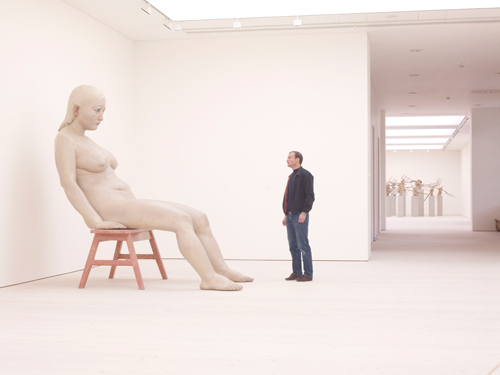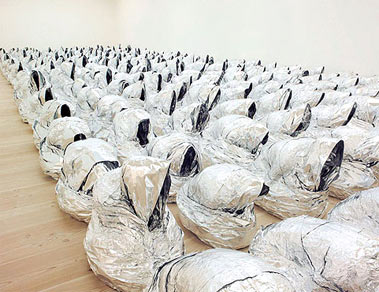 SEX
SEX In Which We Continue To Read Leonard Michaels' Innermosts
 Monday, June 22, 2009 at 8:13PM
Monday, June 22, 2009 at 8:13PM You can find the first installment of Leonard Michaels' Journal here. Read on...

from Journal
by LEONARD MICHAELS
I visited a monastery in the wilderness. The monks had carved every stone by hand. It took years to complete. They were content, but their work was so ugly it seemed to comment on their faith. I wandered in halls and courtyard looking for a redeeming touch. There was none. In works of self-abnegating faith is there necessary ugliness?

Writers die twice, first their bodies, then their works, but they produce book after book, like peacocks spreading their tails, a gorgeous flair of color soon shlepped through the dust.
Boris tells me, apropos of nothing, that he has been rereading certain novels and poems. It's as if he is talking to himself, yet he is curious to hear my opinion. He says the novels and poems mean different things whenever he returns to them. As he talks, he picks up a small lacquered bowl which he brought back from Japan. It is very old, very good. It has the aura of a museum object whose value has emerged over time and declared itself absolutely, but he studies it with a worried, skeptical, suspicious eye.

Spoke to her on the phone. She cried. Said she missed me. I feel like a ghoul wandering in the darkness.

Eddie said her ran into his former wife in the street in New York, and they talked. They talked as if neith of them knew how to say nice to see you, I'm expected somewhere, goodbye, goodbye. They went to a restaurant and ate and talked some more, and they went to her apartment, and they made love. Then she said, "So why did we get divorced?" Eddie smiled at me and said, "See?" as if he were an idiot of circumstances, shlepped into pain and confusion by his cock. "You know how long I was divorced before I remarried?" he asked. "Not three days," he said. I was sad for him and for her, and her, and her. The feeling widened like circles about a leaf fallen onto the surface of a pond.
I eat standing up, leaning over the sink. I wouldn't eat like this if anyone could see me.

New York. Mother's apartment. Moritz visits, tells a story. One freezing morning everybody had to go outside and and watch a man be hanged. He'd tried to escape the previous night. Beside Moritz stood a boy, the man's brother. "His nose became red. It was so red," said Moritz. "That's what I remember." Moritz's eyes enlarge and his voice becomes urgent, as if it were happening again. His excitement isn't that of a storyteller. he can recite passages from Manfred in Polish, but he isn't literary. The experience is still too real to him. His memories are very dangerous. He fears another heart attack, but he tells about the camps. It should be remembered as he tells it. Freezing morning. The boy's red nose.
Her voice is flat and coolly distant, so I imagine things aren't over between us.
Boris drove past me in his new car, speeding down Euclid Avenue, picking his nose. he didn't see me. He was watching the road, driving fast, obsessed with his nose. Each life, says Ortega, is a perspective on reality.

I talk to Annette only on the phone. Afraid we might touch.
Every wildness plays with death. Washing your hands is a ritual to protest against death, and so are all the small correct things you do every day. Aren't there people who do nothing else? They pay their bills on time and go to the doctor once a year. They have proper sentiments and beliefs. They are nice people. I wanted to do dull ordinary chores all day. I wanted to be like nice people only to forget death, only to feel how I'm still alive.

The waiter does everything quick, everything right -- no sauce on the fish, dry wine, salad dressing on the side. Then he bends over her and whispers, "Why are you angry?"
She says, "I'm not angry."
He says, "I can see that you're angry."
"I'm not angry."
"Didn't I bring you everything you asked for?"
His voice becomes bigger, self-pitying. "Fish, soup, bread, wine. Everything you asked for."
She says, "I shouldn't have to ask." The waiter walks away rolling his eyes. He doesn't understand American women. I rise, go to her table, and say, "Do you mind if I join you?"
She says, "What took you so long?"
Leonard Michaels is the senior contributor to This Recording. He died in 2003.

"Maggie and Me" - Dirty Projectors (mp3)
"Time for Bed" - Dirty Projectors (mp3)
"She Turns to Ash" - Dirty Projectors (mp3)
"We Are Striving" - Dirty Projectors (mp3)

 japan,
japan,  journal,
journal,  leonard michaels
leonard michaels 














































